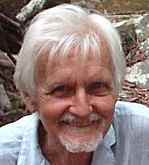
By taking an early morning flight to NY, it enabled me to then catch the Amtrak train to Wilmington where my friend and host Wayne was awaiting my arrival to transport me the hour and a half or so's drive to Chestertown.
This photo shows Wayne(tallest) with his partner(no not the dog), and some of the others whom I met and attended my lecture during my last visit, and who kindly came again this time.
Wayne stayed on the farm some 30 odd years ago, and we have remained friends ever since. He is the Inn keeper of the White Swan Tavern, an historical landmark in Chestertown.


I lifted the following description from their website:
History of the Inn
The White Swan Tavern has been a familiar landmark in Chestertown since pre-Revolutionary War days. Not far from the great Eastern cities, it is an unexpectedly quiet, elegant place nestled in the history of Maryland's Eastern Shore. The White Swan is for those who treasure serene streets, birdsong mornings, impeccable service, and the grace of New World Tradition.
The restoration of the White Swan Tavern began in 1978 with an archeological dig. Evidence uncovered indicated that the site was used prior to 1733 as a tannery, operated by the shoemaker of Chestertown, John Lovegrove. His one-room dwelling, now converted into one of our six period guest rooms as the Lovegrove Kitchen, was the first building constructed on the lot.
Joseph Nicholson purchased the property from Lovegrove in 1733, and built his home on the location which comprises the front portion of the present structure. As a member of the Committee of Correspondence, Nicholson had a very real role in the revolution and emergence of the young Republic. He was influential in the founding of Chestertown's Washington College in 1782, the tenth oldest liberal arts college in the nation.
In 1793, the property passed to John Bordley, who enlarged the residence to accommodate the demands of tavern use. The charm of the present structure is due largely to Bordley's efforts.
Between 1803 and 1853, the property was operated as a tavern by various owners and innkeepers, the most notable of whom was the Reverend William H. Wilmer, then pastor of St. Paul's church, Alexandria, Virginia. The Reverend Wilmer was also the rector of Bruton Parish Church in Williamsburg, Virginia and president of the College of William & Mary.
"...[T]he best tavern in town" was up for sale in 1853, and purchased by Thomas W. Eliason, a merchant in everything from clothing to lumber.
In 1978, the property was impeccably restored to its 1793 appearance in Bordley's time, with one room devoted to the display of many artifacts found on the site. During the entire
Through painstaking analysis, the original paint color was reproduced for the wall paneling and trim. Even the contemporary stoneware dishes were modeled on a set of early chargers recovered from the tavern site. The rooms are named after the various owners of this historic building.
In March of 1981, after three years and five months preparation, The White Swan Tavern opened its doors to the public again. Today the tavern operates as a bed and breakfast, offering accommodations and afternoon tea, as well as amenities for small conferences, weddings, and receptions. Just as it was described in the 18th century, the White Swan remains "a comfortable... Public House... with every attention given to render comfort and pleasure to such as favor it with their patronage."
Contact the White Swan for more information.
Chestertown was founded in 1706 as a trading town and is situated on the banks of the Chester River. It has remained little changed for the last two hundred years.

Most of the traffic passing through Chestertown these days is by road, and even this is quite limited, it not being situated on any of the main highways. And the river traffic as almost non-existent, with most being of a holiday or private nature.

Around the older part of the town, there are to be seen many older and elegant homes of a time long past

 These are a couple of old claboard houses which have been boarded up awaiting restoration.
These are a couple of old claboard houses which have been boarded up awaiting restoration.
 This large old building which was originally a corn milll is being restored as a modern office complex. Quite a challenge and very innovatively done
This large old building which was originally a corn milll is being restored as a modern office complex. Quite a challenge and very innovatively doneThis old barn has been fully restored, and with the old carriages as a part of it, is now the museum.



Washington College, established in 1782 on a very beautiful campus is on the outskirts of the old town, and walking past it is just like taking a gigantic step in time, from the 18th century, into the 21st century. Quite a contrast, as I am sure you are well aware, and, if not, almost a shock to the psyche. The first is quiet and gentle, full of fragrance, and what I would describe as old world friendliness.
The latter is brash and harsh, filled with noise and disruption and lack of harmony

No comments:
Post a Comment